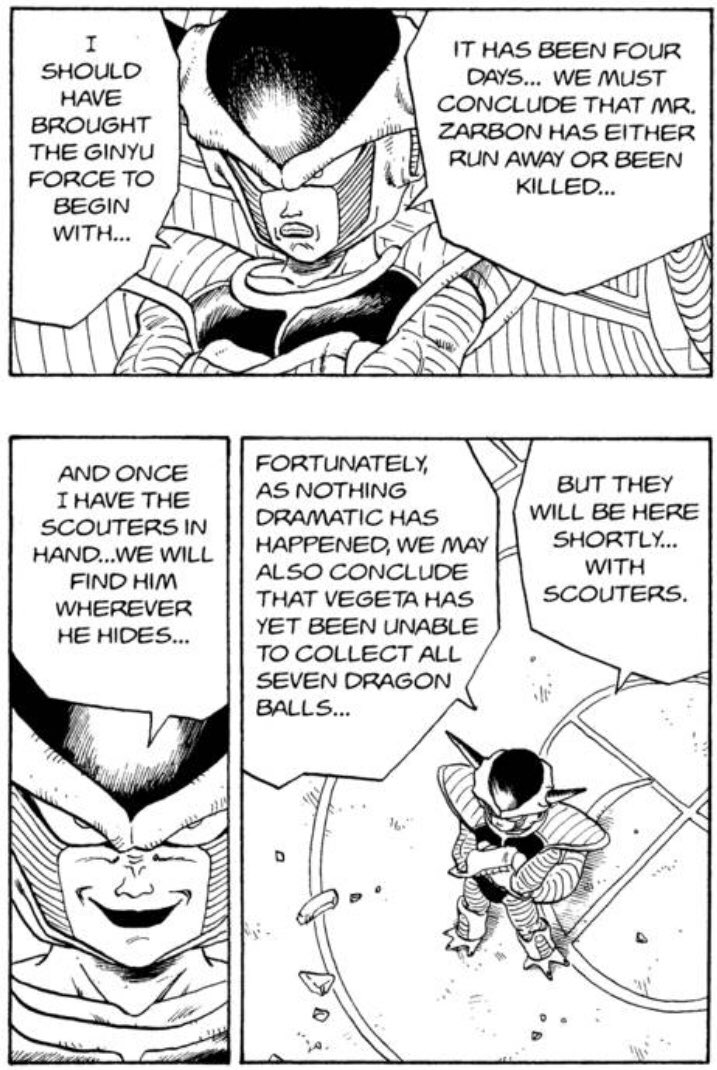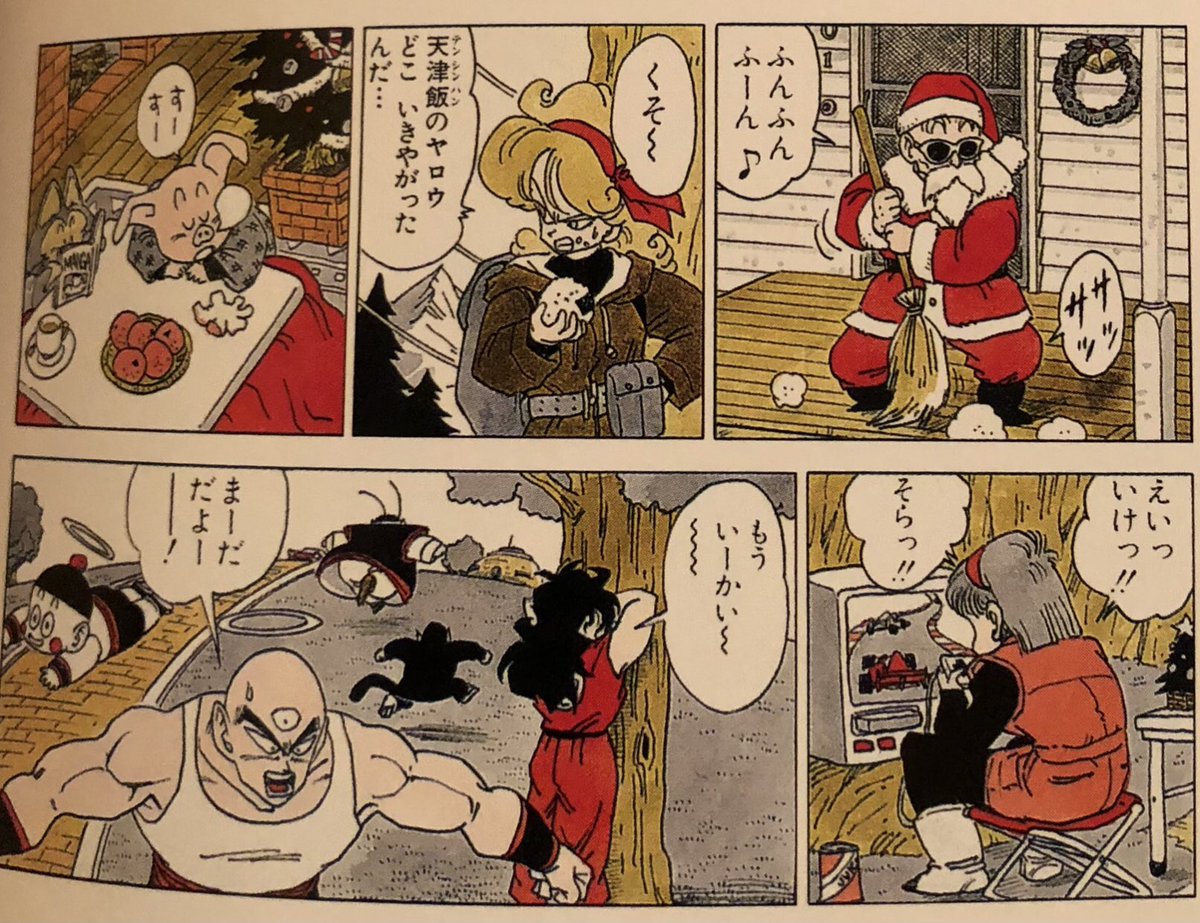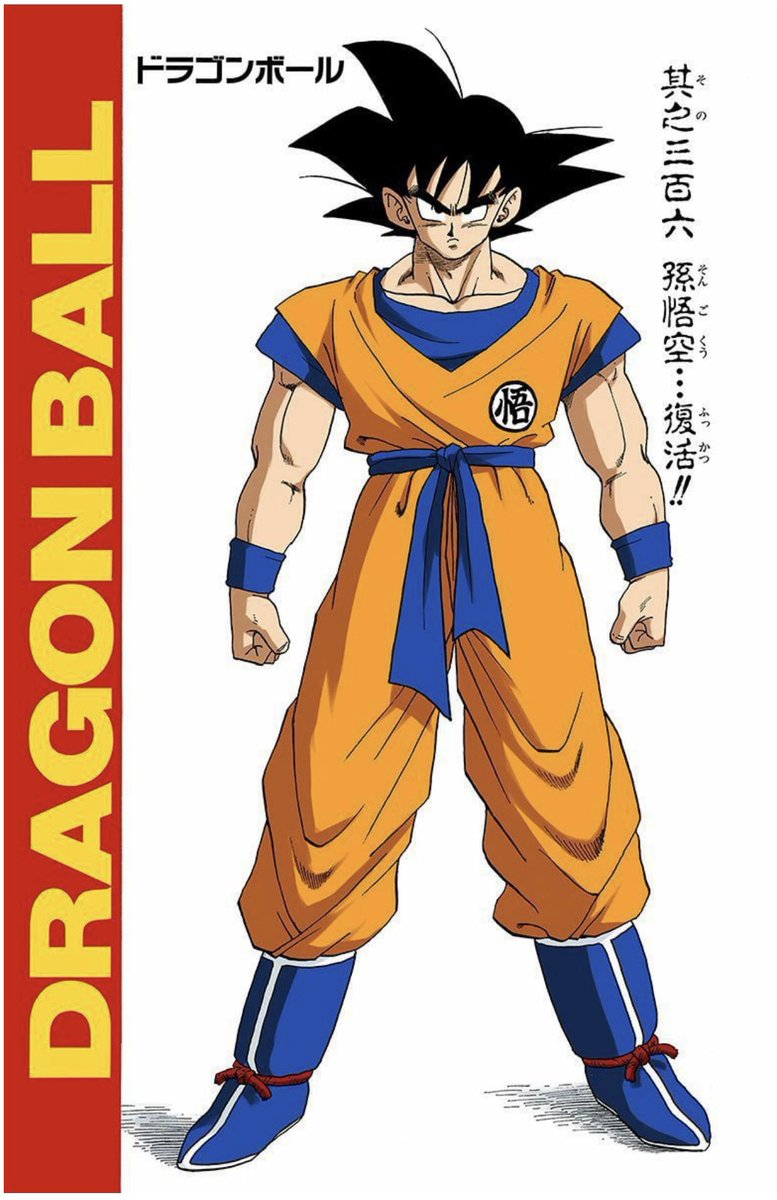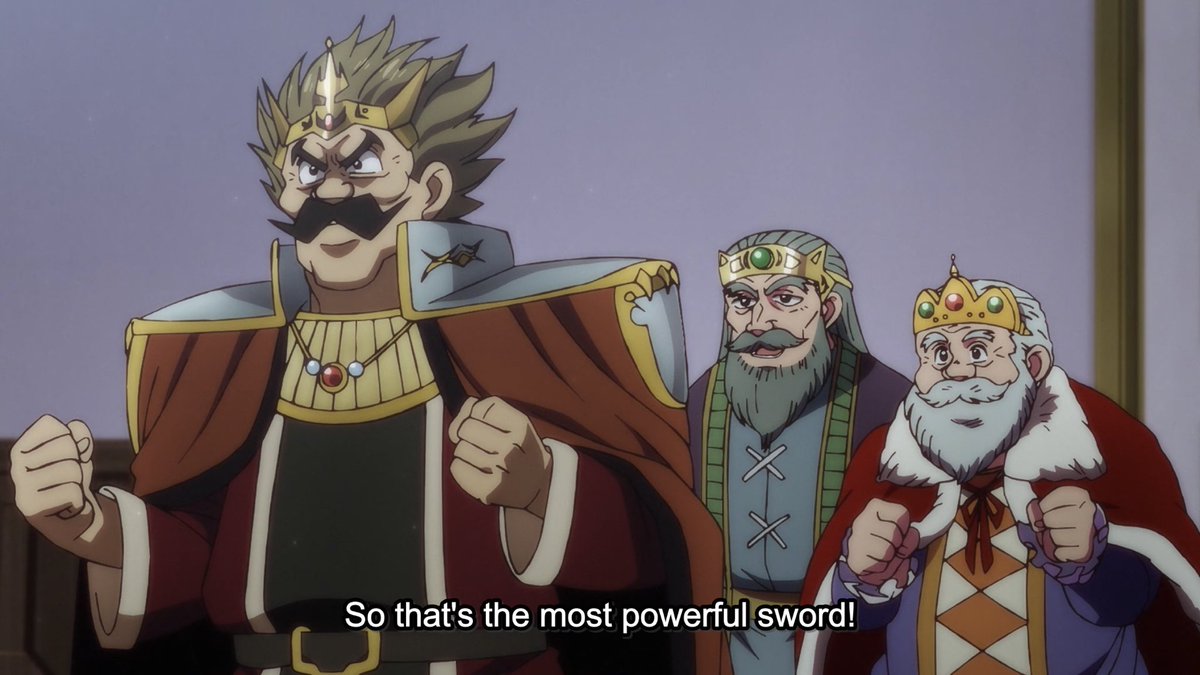December 24th, Age 762: the Ginyu Force arrive on Namek. Goku arrives on Namek. Goku beats the Ginyu Force. Freeza beats everybody else. Goku gets mad. #HistoryofEver
Yes, Goku’s S-Cells finally kick into high gear. It’s far too much for filler land’s computers to handle! Plus we learn an awful lot about Kewi’s race. Apparently Freeza wiped them out, but promised the survivors he’d make them prosper again. Talk about an abusive relationship.
To recap: Goku begins a six-day trip on Day 1 of the Namek arc, the Ginyu Force start a five-day trip on Day 2, so both arrive on Day 7. In the meantime, Vegeta kills Zarbon on Day 3 and spends the next four days trying to locate Kuririn+Gohan as they head for the Great Elder. 







(As ever, it’s peculiar that Freeza seems to measure things in Earth days, but whatever. Toriyama was clearly trying to keep everything consistent. For a change)
So once again, it’s on Day 7 when the shit all hits the fan. Vegeta catches up with Our Heroes, they team up to face the Ginyu Force and win (with some help from Goku), and this leads into the long battle with Freeza, which rounds out the arc (minus the wishing aftermath). 







In the original manga, this single day takes up 60 chapters, about 11.5% of the total run. In DBZ it takes up roughly 47 episodes, which Kai knocks down to 27. In comparison, DBS ep.88-131 consist of a single 24 hour period spread over 44 episodes, so even the ToP comes in second 



(It’s harder to tell exactly how much of the manga version of the ToP arc takes place within 24 hours, but it seems to be no more than 600 pages, well below the 800+ pages that make up the final day of the Namek arc in the manga)
As for the infamous five minutes, in the manga this is about 9 chapters (126 pages) and in DBZ 10 episodes, which Kai cuts down to 5. The manga version’s the most plausible (or least implausible), but even there you have to assume everyone’s talking very, very quickly. 



It’s during these five minutes of course that the wish is made to revive everyone killed by Freeza and co., which ends up reviving Zarbon’s mistreated underling Cranberry. He makes a beeline for Vegeta’s pod and escapes before the next wish teleports everyone to Earth. 



Speaking of the revival wish: this is limited in scope to only those who have died within the past year, due to the massive amount of people Freeza and co have killed. In other words, the year limit only applies to big huge giant large groups, not individuals. 



This is made extra clear by the nonchalant way Kaio tells Yamcha and co their resurrection will have to be postponed. They’re all A-OK with waiting a year, which of course would be rather foolish if the year limit wasn’t limited to large groups. 



The main series of course never specifies any exact dates for the events on Namek, but Daizenshuu 7 places the seven days of the arc from December 18 to 24. Possibly it’s a reference to Toriyama’s Christmas bonus comic from the 1991 No.3-4 Jump double issue. 



This brief gag strip ran in the same Jump issue that included both chapters 305 and 306 (Vegeta getting beat up by Freeza and Goku’s revival), so it was a big day for DB fans all around. It shows the supporting cast goofing off and sorta celebrating Christmas. 



It’s debatable to what extent this strip should count as canon, but it’s not like there’s much else to go on for assigning a date to the Namek arc. Regardless, this strip marks Lunch’s final appearance as drawn by Toriyama, outside of the odd spine image or two. 







(Also, how much of a bummer is it that they didn’t use this strip to make filler?)
Toriyama revealed the shocking true about Super Saiyans in his Saikyo Jump Saiyan Special Q&A, namely that it’s all due to things called S-Cells (short for Sidichlorian, no doubt). The key to a high S-Cell count is being strong and nice, so Goku’s a champ. kanzenshuu.com/translations/s… 



• • •
Missing some Tweet in this thread? You can try to
force a refresh









































